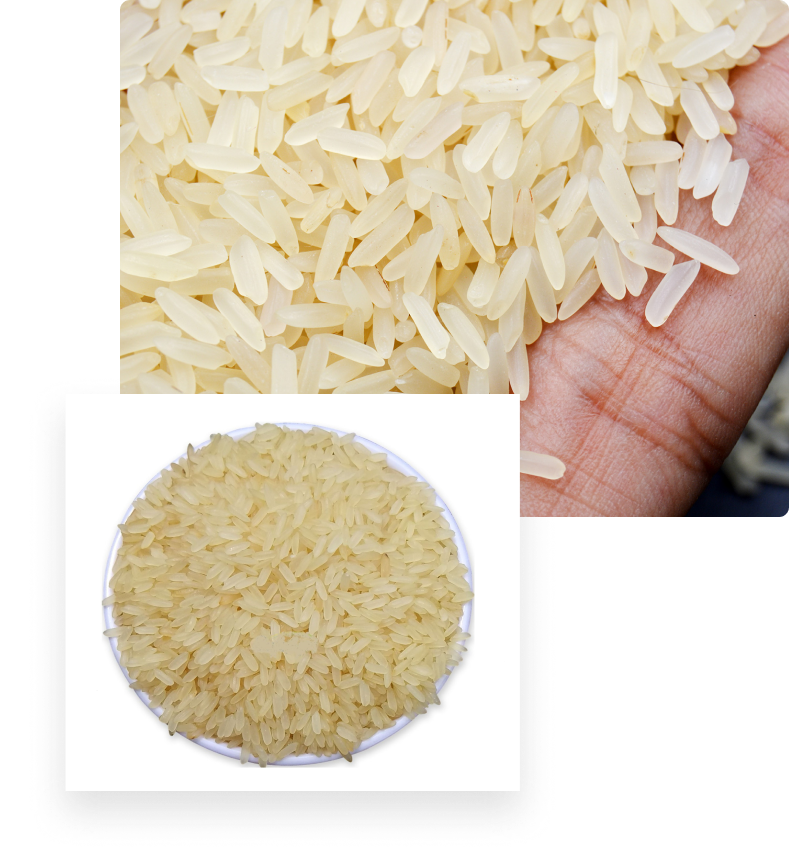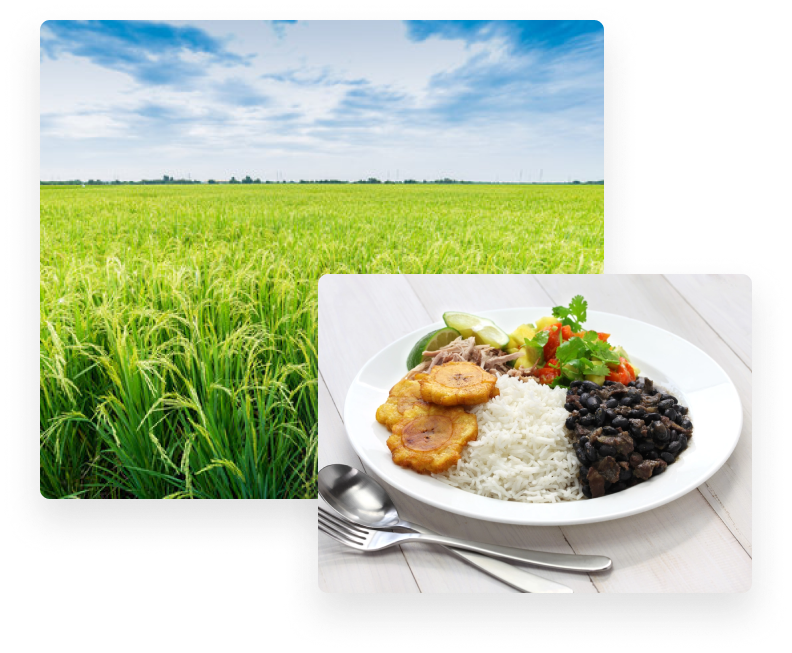DRY EDIBLE BEANS, RICE, & CORN
Parboiled Rice
THE HIGHEST QUALITY PARBOILED RICE SUPPLIERS TO CUSTOMERS AROUND THE WORLD
Rice
Parboiled Rice Suppliers
We are among the leading parboiled rice suppliers for foodservice and export customers. Parboiled rice undergoes a specific process where it is partially boiled in the husk before it is processed. Specifically, this preparation method involves soaking the rice, followed by steaming it, and then drying it before milling. Consequently, this process makes the rice more nutritious than regular white rice and enhances its texture and flavor. Notably, our light golden parboiled rice not only cooks perfectly but also tastes delicious!
Moreover, parboiled rice proves to be an excellent choice for foodservice, retail chains, and institutions. In comparison to regular white rice, parboiled rice remains firmer and less sticky when cooked. As a result, when you cook our parboiled rice, you achieve a delicious, firm, yet feathery grain that pairs exceptionally well with a wide range of foods.
Characteristics:
- Nutritional Benefits: Parboiling is known to help retain more of the rice’s natural nutrients, such as vitamins and minerals, compared to regular white rice. Furthermore, the process aids in transferring some of the nutrients from the husk into the grain, thereby enhancing the overall nutritional value.
- Texture and Cooking: When cooked, parboiled rice is characterized by its firmer texture and less sticky consistency compared to white rice. Moreover, it is noted for its slightly nutty flavor and its ability to maintain its shape well. Consequently, this makes parboiled rice ideal for dishes where separate grains are desired.
- Appearance: Due to the parboiling process, the rice often exhibits a slightly yellowish or golden hue. This distinct color is a direct result of the processing method.
- Preparation and Storage: Parboiled rice is distinguished by its longer shelf life in comparison to regular white rice. Additionally, it cooks relatively quickly and does not require rinsing before cooking, which significantly adds to its convenience.
Overall, parboiled rice is considered a versatile option that combines benefits from both brown and white rice, thus offering a well-balanced combination of nutrition, texture, and flavor.


Rice
Milling Process
The parboiled rice milling process involves several key steps that transform paddy rice into parboiled rice. Here’s a detailed look at the process:
- Soaking: Initially, raw paddy rice soaks in water for a specific period. This step hydrates the grains and prepares them for the next stage of processing. Typically, the soaking time varies but generally lasts from 8 to 24 hours.
- Steaming: Following soaking, steam the rice under high pressure. This crucial steaming process helps gelatinize the starch inside the grains and partially cooks them. Additionally, it enhances the rice’s nutritional value by transferring some of the nutrients from the husk into the grain.
- Drying: Subsequently, after steaming, dry the rice to reduce its moisture content and make it suitable for milling. Use various methods for drying, including sun drying or mechanical dryers.
- Milling: Once dried, mill the rice. During milling, remove the husk (the outermost layer), the bran (the second layer), and sometimes a small portion of the germ (the nutrient-rich part of the grain). The goal is to produce clean, white rice with the desired texture and appearance. Due to the steaming process, parboiled rice has a thicker, more robust outer layer compared to regular white rice.
- Polishing (Optional): Depending on the desired quality and appearance, the rice may undergo additional polishing. This optional step aims to achieve a smooth, glossy finish by removing any remaining bran particles and enhancing the rice’s overall appearance.
- Sorting and Grading: After milling and optional polishing, the rice is sorted and graded. This step is essential for removing any broken grains, stones, or other impurities, thereby ensuring uniform quality of the rice for packaging and sale.
- Packaging: Finally, the parboiled rice is packaged in various forms, such as bulk, retail, or specialty packaging, and is then ready for distribution and consumption.
Overall, the parboiling process enhances the rice’s nutritional value and improves its cooking characteristics, such as firmness and the ability to retain separate grains when cooked.